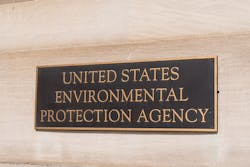EPA finalizes plan to clean up contamination at New Jersey Superfund site
The U.S. Environmental Protection Agency (EPA) is finalizing its cleanup plan for the Riverside Industrial Park Superfund site on the bank of the Passaic River in Newark, New Jersey. The final decision, in the form of a Record of Decision (ROD), includes a combination of cleanup technologies and other measures to address contaminated soil, soil gas, groundwater, sewer water and waste at the site.
“We have already taken action to address some of the more immediate risks facing this community, and this final cleanup plan will allow us to move forward on the work needed to address risks in the longer-term,” said acting regional administrator Walter Mugdan. “This final decision builds on previous EPA actions of plugging a discharge pipe and addressing the underground storage tanks, which were releasing hazardous chemicals into the Passaic River.”
EPA’s cleanup plan calls for:
- Excavating contaminated soil. Lead-contaminated soil and fill material around Building #7 will be removed and disposed of off-site. The bulkhead bordering the site along the river will be reinforced or reconstructed, and a site-wide cap will be constructed. To protect the cleanup measures, deed notices will be recorded and amended, and fencing will be maintained and enhanced, as appropriate, across the site.
- Assessing vapors in the soil and the indoor air in occupied buildings on the site and, if needed, installing mitigation systems to protect people in those buildings from vapor intrusion. EPA will require that special systems be installed in any buildings constructed in the future to protect occupants. EPA will establish site-wide deed notices and appropriate restrictions on property use.
- Installing a system to pump and treat contaminated groundwater to minimize migration of groundwater contaminants to the Passaic River. Groundwater will also be monitored to ensure the pump and treat systems is effective. EPA will also restrict the use of groundwater.
- Removing sewer water and solids from an inactive sewer line and transferring it into appropriate containers for off-site treatment and disposal. The sewer line will be closed.
- Transferring waste from underground storage tanks (USTs), contaminated soil surrounding the USTs and various waste found across the site into appropriate containers for off-site treatment and disposal.
The Riverside Industrial Park Superfund site is a 7.6-acre active industrial property, located at 29 Riverside Avenue in Newark, New Jersey. From 1902 to 1971, the Patton Paint Company (which merged into the Paint and Varnish Division of Pittsburgh Plate Glass Company in 1920, later changing its name to PPG Industries, Inc. in 1968) manufactured paint, resins, linseed oil, and varnish. From 1971 to the present day, the site was subdivided into fifteen lots and has been used by many companies for a variety of businesses from warehousing and packaging to chemical and cosmetics manufacturing. The soil and groundwater contamination are attributed to historic site operations, accidental spills, illegal dumping, improper handling of raw materials, and improper waste disposal.
EPA held a virtual public meeting on August 5, 2020, to explain its cleanup plan. EPA accepted public comments and considered public input before finalizing the plan. EPA granted several comment period extensions and closely reviewed all public comments that were submitted.
EPA’s final decision, outlined in the ROD and EPA’s complete response to all comments, can be found at: https://www.epa.gov/superfund/riverside-industrial
